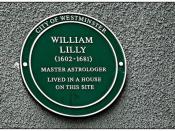The basic astrological assumptions are not hard to grasp. For if astronomy is the study of the movements of the heavenly bodies, then astrology is the study of the effects of those movements. The astronomers of the ancient world assumed a division of the universe whereby the superior, immutable bodies of the celestial worlds ruled over the terrestrial or sublunary sphere, where all was mortality and change. It was assumed that the stars had special qualities and influences which were transmitted downwards upon the passive earth, and which varied in their effect, according to the changing relationship of the heavenly bodies to each other. They were led to postulate a single system in which the seven moving stars or planet shifted their position in relation to the earth and each other, against a fixed backcloth of the twelve signs of the zodiac.
There was nothing obscure about these general assumptions.
At the beginning of the sixteenth century astrological doctrines were part of the educated man's picture of the universe and its workings. It was generally accepted that the four elements constituting the sublunary region (earth, air, fire & water) were kept in their state of ceaseless transformation by the movement of the heavenly bodies. The various planets transmitted different quantities of the four physiological qualities of heat and cold, dryness and moisture. Therefore astrology was less a separate discipline than an aspect of a generally accepted world picture. During the Renaissance, even more than in the Middle Ages, astrology pervaded all aspects of the intellectual framework in which men were educated.
During the sixteenth and seventeenth centuries there were four main branches of judicial astrology. First, there were the general predictions based on the future movements of the ravens and taking note of such impending events as eclipses of the...


